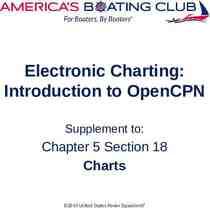Concept Map of Understanding: Instructional Design,
9 Slides561.04 KB
Concept Map of Understanding: Instructional Design, Instructional Technology and Distance Education Prepared by Leesha Roberts, ID:315103081
INITIAL CONCEPT MAP OF UNDERSTANDING OF THE FIELDS OF INSTRUCTIONAL DESIGN, INSTRUCTIONAL TECHNOLOGY AND DISTANCE EDUCATION
FINAL CONCEPT MAP OF UNDERSTANDING OF THE FIELDS OF INSTRUCTIONAL DESIGN, INSTRUCTIONAL TECHNOLOGY AND DISTANCE EDUCATION
CHANGE IN KNOWLEDGE The first concept map had no real sense of time. The new one identifies at what point in time I learned the new knowledge My initial concept of the fields were not clearly displayed. I only focused on the definitions of the fields for the first concept map. Distance Education Instructional Technology Instructional Design Learning Theories
CHANGE IN KNOWLEDGE In the second concept map I focused on the characteristics of each of the fields and how they are related. My knowledge have changed in how I perceive each field, previously I perceived each field as a separate entity, now I see them as all connected. I now know that Instructional Design is the main vein that holds Instructional technology and distance education, while Learning Theory is the base for all areas.
FACTORS INFLUENCING MY 2ND DIAGRAM My changed view of : Instructional design. Learning theories The learner and the contextual settings to which the learning will occur The influence of instructional design on instructional technology and distance education. Learning overall How easy it is to purposely create instruction for diverse learners The similarities and differences among the 3 fields
Reflections My knowledge has changed as follows: About the crucial impact of learning theories have deepened in terms of how careful selection of theories within particular paradigms can have an effect on instruction. I now have the knowledge to develop instruction for learners that focus on approaches and methods specific to the learning context that is based on sound learning theories. I have also found that I can apply the use of an instructional design model to a learning context/scenario.
Reflections I also was enlightened about instructional design model categories are associated with various learning theories for example Dick and Carey is seen as prescriptive. I was also made aware of Merrill’s first principles of instruction which states that the first principle for instruction can be found within most instructional design theories and models. Overall I have revaluated what learning means and I have discovered that learning is indeed complex and learning theories are constantly being developed with some referring back to traditional understandings or trying to explore new understandings.
References Botturi, L. (2003). Instructional design & learning technology standards: An overview. ICeF-Quaderni dell’Istituto, 9. Driscoll, M. P., & Driscoll, M. P. (2005). Psychology of learning for instruction. NY. Pearson. Reigeluth, C. M., & Carr-Chellman, A. A. (2009). Instructional- design theories and models: Building a common knowledge base (Vol. III).














